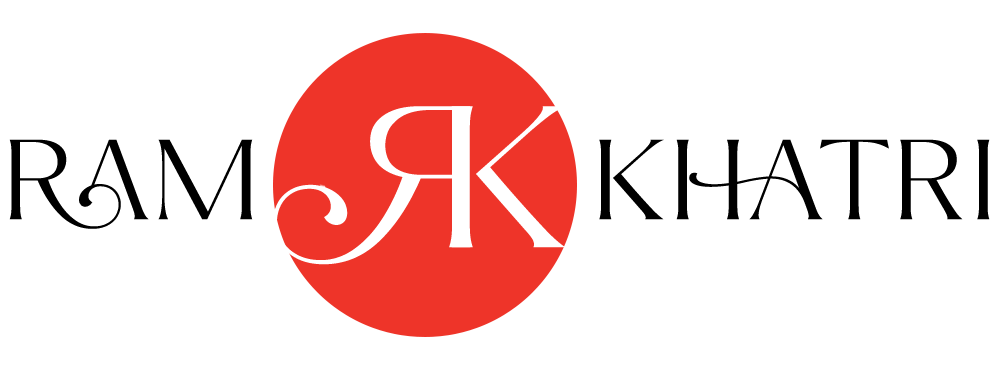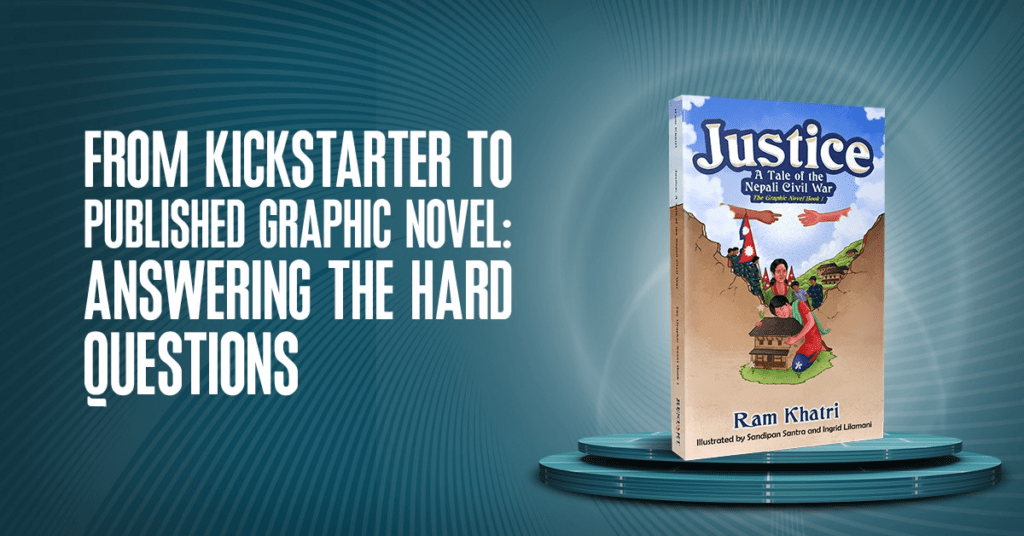A BRIEF INTRODUCTION ABOUT MY GRAPHIC NOVEL
Like the title suggests, Justice: A Tale of the Nepali Civil War is based on the Nepali civil war (not a hardcore war).
A family’s struggle and fight for justice during and after the time of the armed conflict in Nepal, the story shows a young girl’s journey to reclaim the life she left behind during the unforgiving conflict.
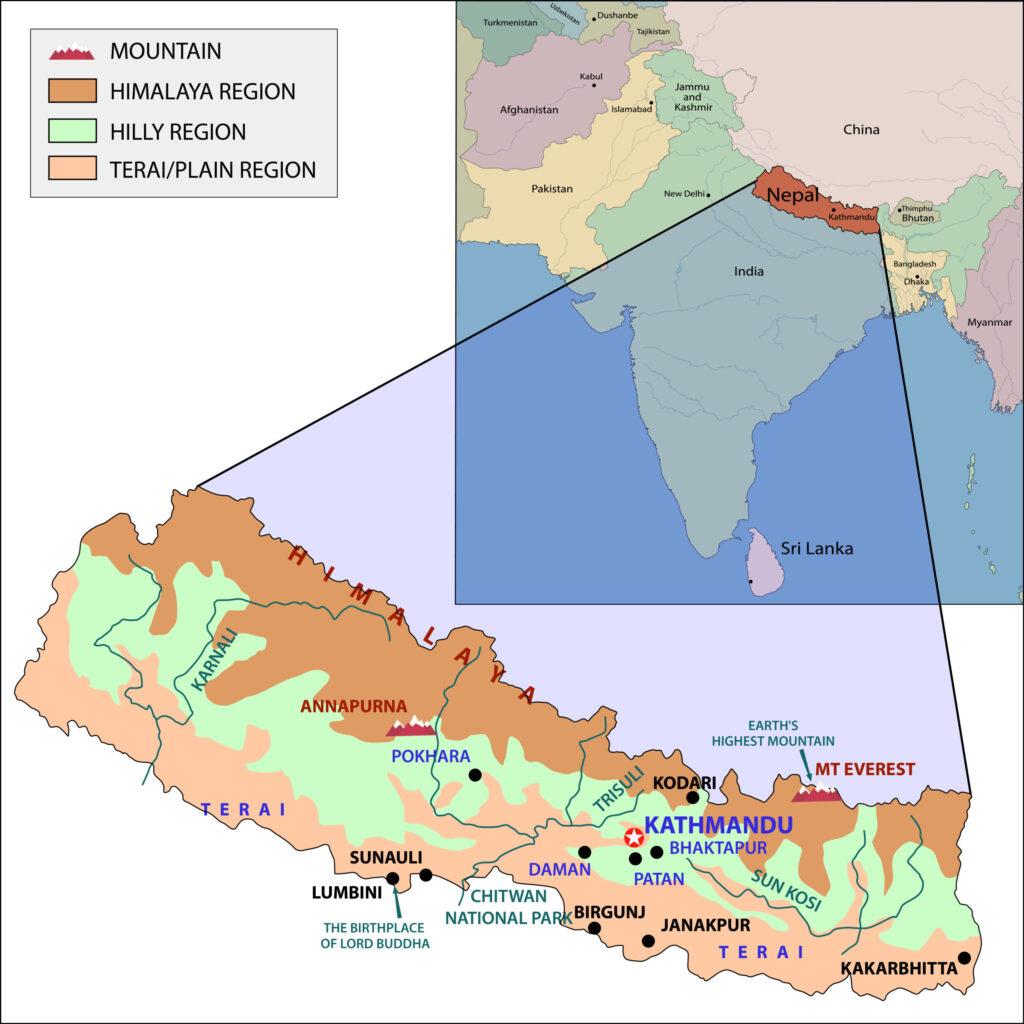
Through persistence and determination, the girl learns the ultimate truth in this graphic novel.
WHY I THOUGHT I AM THE RIGHT PERSON TO WRITE THIS BOOK
Originally from Nepal where the story of the graphic novel was set, I started my publishing career exploring literature and translation. Whether that was translation, content creation, or handling and managing book projects, I was always close to storytelling and book publishing.
I have translated Franz Kafka’s The Metamorphosis into Nepali and Nepali Maoist War short stories by established Nepali authors into English. I believe that my love of literature, translation, and knowledge of the culture where the story was set made me the right fit to write this book.
REASON BEHIND CHOOSING THE NEPALI STORY AND THE GRAPHIC ADAPTATION

Before I chose the story based on the Nepali civil war, my plan was to pick a Nepali classic bestseller such as Lil Bahadur Chhetri’s Basain or BP Koirala’s Sumnima for the graphic novel adaptation. Soon, I realized that finding the real copyright holder and handling the contracts and negotiation was a more work than I had imagined.
Then I decided to focus on original content by creating my own story. Justice represents not only a diverse piece of literature but also a story that represents an important period of a country’s history and the voice of many families who were victimized and displaced during the Maoist revolution in Nepal.

I also thought that transmedia and graphic adaptations were the most artistic form of literature at the time when many writings are becoming more adaptive to the modern readers. Innovations, like the e-book itself, were becoming more normal and popular within the graphic novel genre. Plus, I was motivated by the topics like future of publishing, transmedia, comics and graphic novels following my publishing degree from Pace University, New York.
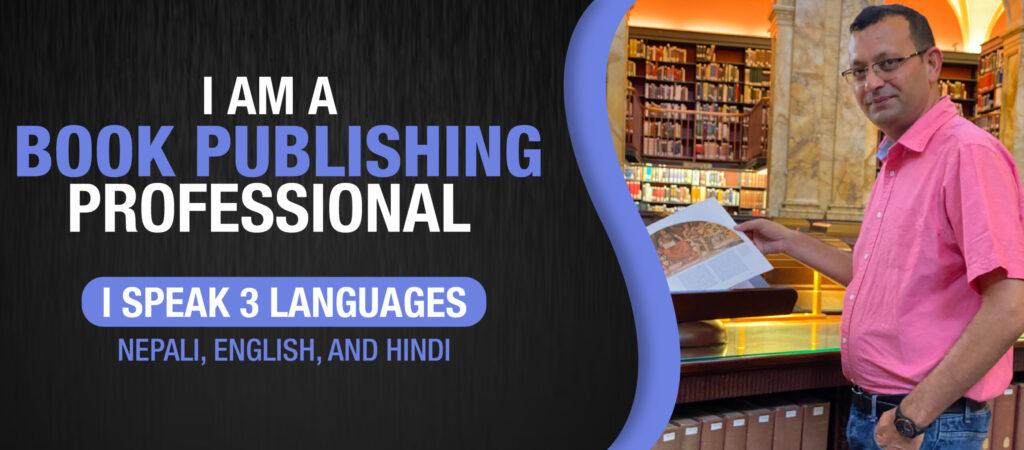
HOW I GOT STARTED
After I decided that I should work on the graphic novel based on the decade long armed struggle (1996-2006) in Nepal, I created story outlines following some research on the important events and historical facts that occurred during the period of mid 1990s and after.
Then I prepared myself with the workflow between myself, script writer, and developmental editor. My experience interning at a literary agency was a great help for the story developmental process by preparing feedback to author’s manuscript from a developmental editor’s perspective.
I and the graphic novel’s developmental editor Blake Hoena worked over two years including the times before and after the Covid era to develop and finalize the 120+ pages script. It was a very exciting collaborative process.
Here, one interesting thing I would like to share with you is that Blake and I never spoke on the phone or met in person; our only communication was through email. We still had effective collaborations to make the script as nice as possible. I then worked with Rachel Slaiman to finalize the script. There were multiple back-and-forth with Blake and Rachel before the script was ready for the artist.

I TOOK TRAINING ON THE KICKSTARTER CAMPAIGN
By the time the script was ready, it was the beginning of 2022, and I began to look for my next opportunity. I needed some funding to pay for the artists and graphic designers. To prepare myself for the Kickstarter campaign, I read the motivating Kickstarter success stories. They include the notable Kickstarter success of Good Night Stories for Rebel Girls and most recent and massive success of Four Secret Novels by Brandon Sampson.

I saw how Kickstarter helped diverse authors and artists, and publishing professionals from around the world to bring new and great ideas to life. I even took the Kickstarter training course with Tyler James, co-founder of ComixTribe and host of ComixLaunch, but left it halfway to give more time on the work on the actual project in my own way.
I LAUNCHED THE KICKSTARTER CROWDFUNDING CAMPAIGN
I prepared the landing page of the graphic novel. I worked with a couple of freelance graphic designers to create it for the Kickstarter campaign.
To run the campaign, I started with my close connections and friends who wanted me to see succeed. I utilized my Facebook and LinkedIn connections. The campaign ran for 30 days, and we were required to reach a certain goal in order to move forward. I was able to achieve that and learned that personal connections for success are the most valuable things in life.

COLLABORATION WITH ILLUSTRATOR AND LETTERER
After the success of the campaign, I had expected to find some Nepali artists to work on my graphic novel, but that turned out to be more of a challenge especially with someone who was experienced working on graphic novels or comics. I realized that Nepal still does not have the exposure of enough people who have experience working in the mainstream publishing world.
Ultimately, I ended up working with two illustrators Sandipan Santra and Ingrid Lilamani. Sandipan was from India and Ingrid from Albania. The reason I worked with the two artists was an experimental purpose – to see how different artists from different cultural backgrounds visualize the story rooted in the Nepali culture.

Being from Nepal’s neighboring country India, Mr. Santra was already familiar with the Nepali culture, and he also had worked on my illustrated version of Kafka’s The Metamorphoses. As a female artist, Ingrid was able to capture the female protagonist Tara’s emotions and gestures in her art. Together, I felt that both were able to compliment one another to design the graphic novel.

Working with these artists was still a challenging task as I had to send them hundreds of reference images, videos, and feedback about the Nepali cultures, characters, and settings. Another interesting lesson I learned from the collaboration was that translating the script into artworks was as serious as the actual translation of literary fiction and poetry known as “serious literature.”
I remember the moments how I had to send multiple correction requests to one artist on his illustration of Nepali Dhaka Topi, which means cap, for example. Working with a Letterer was straightforward. You can watch the early development of artworks in this video.
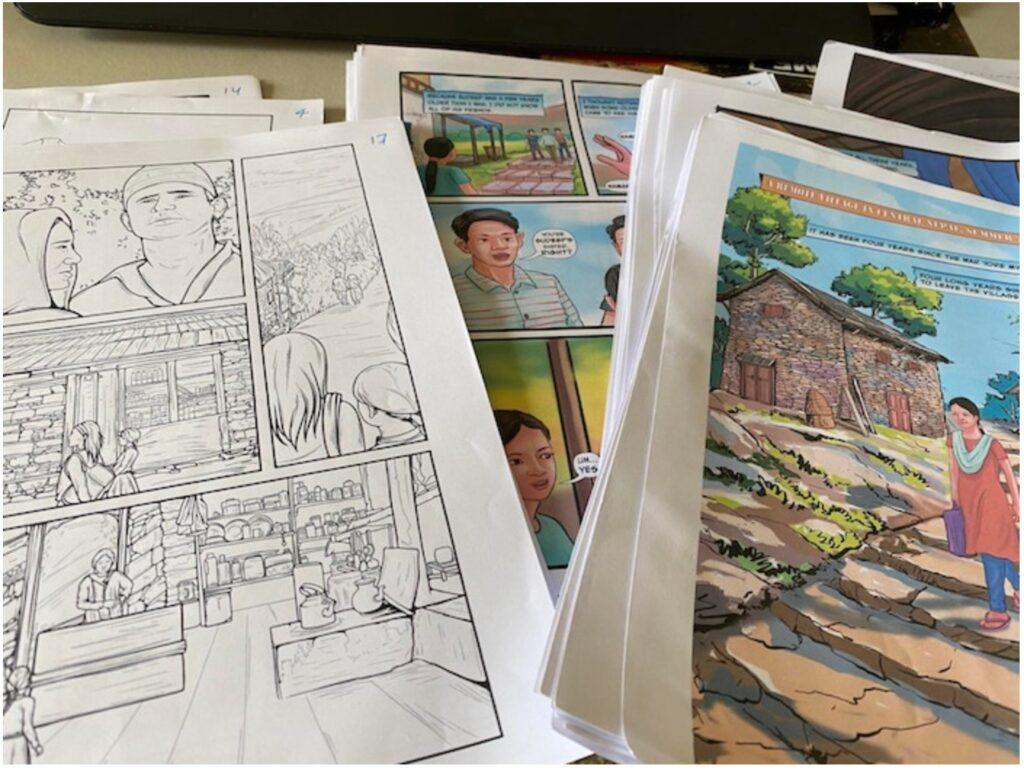
MAKING THE BOOK AVAILABLE THROUGH WHOLESALERS AND DISTRIBUTORS
Some people still ask me if my graphic novel was self-published. I always tell them: any books that are published through crowdfunding campaigns are more like pre-ordered rather than self-published. The graphic novel is available under print-on-demand publishing service. This means the book is printed only after someone places an order.
In traditional book publishing, the challenge is having your book discovered even with the best marketing and publicity campaigns. I made the graphic novel available through major outlets like Amazon, Bookshops.org, Barnes & Noble, and library wholesaler OverDrive.
I also enhanced metadata by adding Amazon A+ content, blurbs and reviews on the Amazon website. The book got coverage on some major print media such as Kirkus Reviews and Independent Book Reviews.
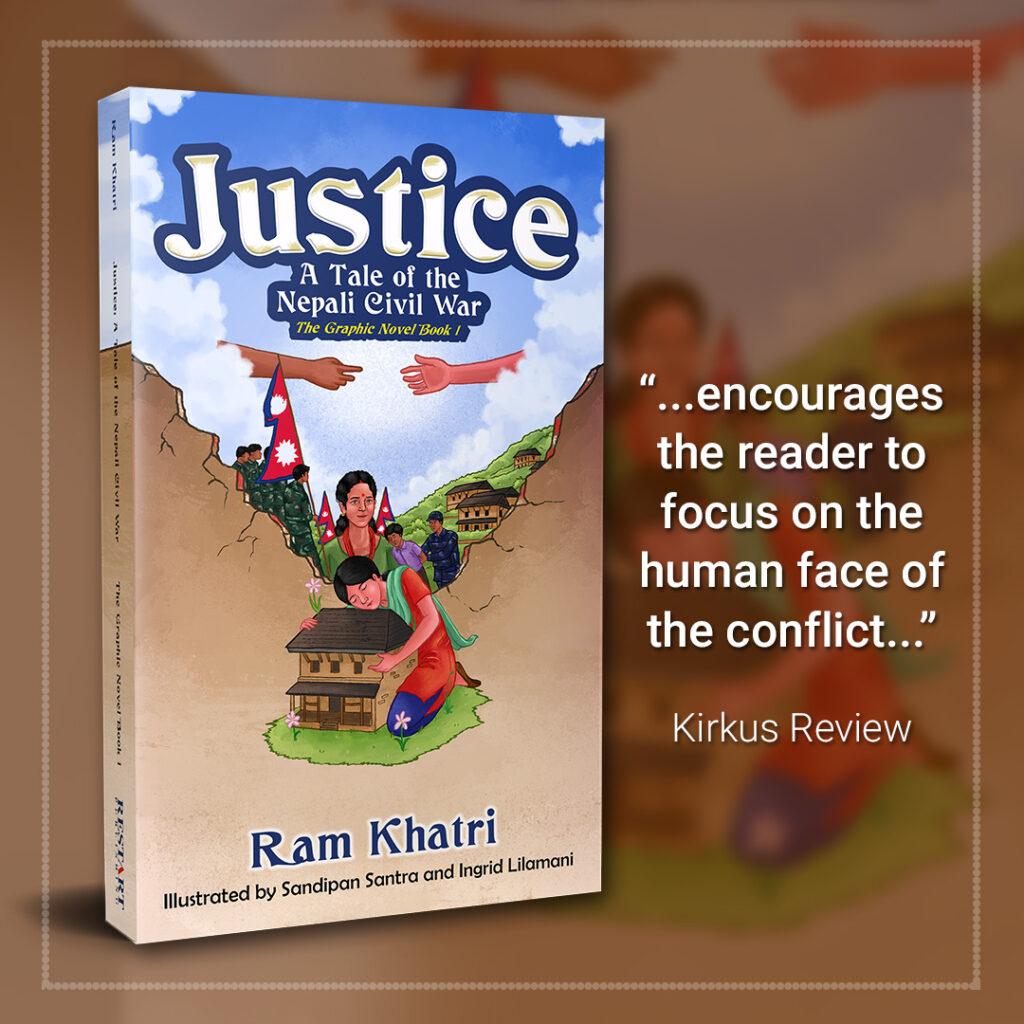
I also encouraged friends and reviewers to leave their unbiased reviews on Goodreads. What still surprises me the most is: it was only after coming to this book distribution phase, I began realizing that my graphic novel was more for educational markets such as schools and libraries.
REACHED OUT TO SCHOOLS AND LIBRARIES
After the graphic novel was available for a wider market, I decided to reach out to libraries and schools targeting students who are in the third grade or above. I started this process from a small book launch event among some students and their guardians.
The campaign was a success as I was able to reach out students (with the help of their guardians) who spoke about their experience reading the graphic novel and what justice meant to them.
A link to one of the students speaking can be found in this video as well. Next, I reached out to libraries which did not turn out as planned, but it was still a great learning curve as a few libraries ordered copies of my graphic novel. The joy of getting direct calls and emails from the librarians was unexplainable. By the time I am preparing this article, I saw Justice was available on Capital Area District Libraries, Michigan; Euless Library, Texas; Snow-isle Libraries, Washington, and New Heaven Community Library, Connecticut.

SENDING BOOKS TO THE TIKTOK INFLUENCERS
To keep myself updated with book marketing and promotion, I frequently read the newsletters of Jane Friedman and Kathy Sandler who write and compile the latest updates about the book industry. The resources by Friedman and Sandler were helpful, especially for the book marketing ideas.
However, reaching out to TikTok influencers needed more work than I had imagined. Building a connection with every influencer you wanted to work with was almost impossible. After coming up with a different approach, TikTok influencers were able to gain interest in my graphic novel.
While using the influencers of different cultures and countries can gain wider exposure for the book, I was often caught off guard with either the book getting lost or that the shipping cost was too high. That did not set me back as seen here in this video by a French TikToker.
MY NEXT STEP
WHO AM I?
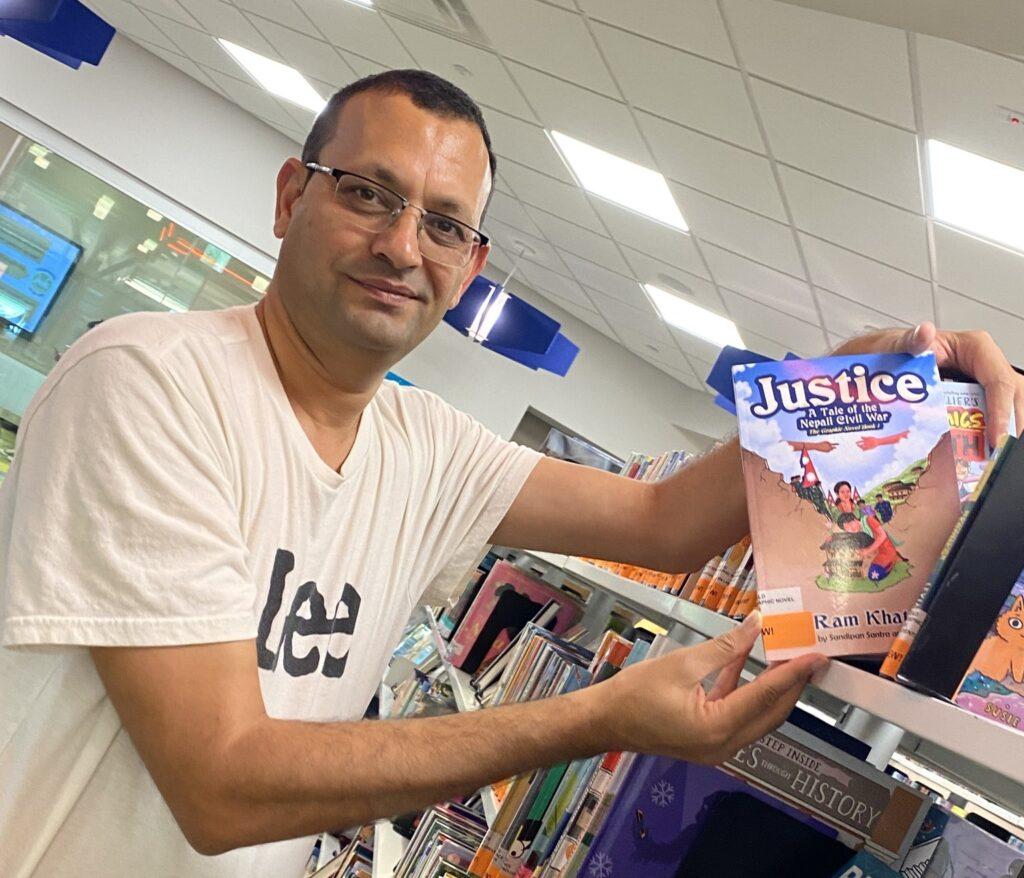
I am the translator of Franz Kafka’s ‘The Metamorphosis‘ in Nepali and have worked as the managing editor and publishing manager for academic and commercial publishers in the United States. I hold an M.S. in publishing from Pace University, New York, and an M.A. in English literature from Tribhuwan University, Kathmandu. I am always fascinated by truly diverse, unrepresented, and heartwarming stories that touch lives.

